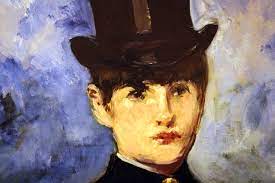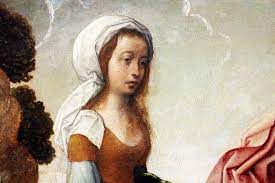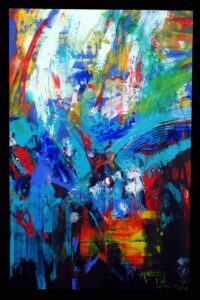Expressionism art is a powerful movement that emerged to evoke emotion and provoke thought.
Through bold colors and exaggerated forms, it seeks to express the artist’s subjective experience rather than reality.
We’ll unpack the origins, characteristics, and influential figures of this captivating art form.
Stay tuned as we explore how expressionism has left its indelible mark on the canvas of art history.
Origins Of Expressionism Art
The inception of Expressionism art can be traced back to the early 20th century, with roots firmly planted in Germany and Austria.
It emerged as a response to the prevalent social changes and the psychological effects of industrialization and urbanization.
We recognize that this movement was not just a spontaneous artistic inclination but a reflection of a complex societal zeitgeist bearing the scars of modernity.
- Artists sought a new visual language – one that transcended the boundaries of conventional beauty and delved into the raw, unfiltered inner world.
- The echoes of Fauvism and the bold color palette of Post-Impressionism considerably influenced the expressive techniques adopted by these artists. Expressionism broadened its reach quickly, infiltrating various creative endeavors beyond painting. It found a firm footing in literature, theatre, and particularly in filmmaking, where it arguably culminated in stark, stylized visuals capable of conveying deep emotional truths. The Cabinet of Dr. Caligari serves as a prime example of how filmmaking utilized expressionistic elements to evoke disturbing atmospheres and psychological tension.
This era of artistic upheaval was spearheaded by two dominant groups – Die Brücke (The Bridge) and Der Blaue Reiter (The Blue Rider).
Their philosophies and approaches varied, yet they shared a fundamental commitment to expressing emotive and often jarring aspects of the human condition.
Notable figures such as Edvard Munch and Wassily Kandinsky propelled the movement into the limelight with their distinctive and pioneering works, including The Scream and Composition VII.
In Die Brücke, we find an emphasis on raw, vigorous brushstrokes and a jarring palette that aimed to disturb as much as communicate.
Contrastingly, Der Blaue Reiter was less about social critique and more focused on a spiritual and abstract approach to visual expression.
The tendrils of Expressionism have left an indelible mark on the landscape of art history.
We understand that to truly appreciate its implications and contributions, one must consider the volatile cultural and emotional fabric from which it was born.
This exploration into its origins allows us to comprehend the nuanced spectrum of influence and the desire of artists to capture the intangible aspects of human experience.

Characteristics Of Expressionism Art
Expressionism art is known for its vivid colors, emotional intensity, and bold lines.
These elements work together to evoke a sense of urgency and raw emotion that is characteristic of the movement.
Artists often distorted figures and landscapes to express their inner feelings rather than to reflect reality, creating works that were deeply personal and subjective.
The use of non-naturalistic colors is another hallmark of expressionism art.
Artists chose hues based on emotional resonance rather than accuracy to the natural world.
This often resulted in paintings with striking, sometimes jarring, color palettes that were integral to conveying the mood or feeling of the piece.
Some defining attributes of expressionism art include the following points –
- Distortion: For heightened emotional effect, the representation of reality is distorted.
- Bold Brushwork: Vigorous application of paint creates dynamic, textured surfaces.
- Juxtaposition of Colors: Colors are used to signal emotion over reality.
- Dynamic Composition: Scenes are often depicted with a rhythmic, swirling composition to create a sense of movement and tension.
The stark portrayal of human anxieties and existential dread was another major theme.
This is observed in iconic works like Edvard Munch’s The Scream, which perfectly embodies the expressionist ethos.
The evocative use of art to tap into the viewer’s psyche is something that powerfully distinguishes expressionism from other art movements.
In the realm of filmmaking, expressionism influenced directors to explore new ways of storytelling.
Through innovative techniques like exaggerated set designs, lighting, and camera angles, filmmakers like Fritz Lang with Metropolis transported viewers into surreal, emotionally charged narratives.
This film particularly stands out for its stylistic choices that resonate with expressionism’s core principles.
Whether on canvas or on the screen, the elements of expressionism push the boundaries of convention to highlight the deeper complexities of human experience.
It’s through these profound artistic choices that viewers are confronted with the unsettling beauty of raw emotional states, making expressionism an ever-relevant art form in today’s visually driven culture.
Influential Figures In Expressionism Art
Edvard Munch and Vincent van Gogh are often heralded as pioneers leading up to expressionism with their intensely personal and evocative paintings.
Munch’s The Scream epitomizes the angst and alienation characteristic of the movement.
Van Gogh’s Starry Night, with its turbulent sky, brings forth the artist’s inner turmoil and has inspired countless discussions on emotional expression in art.
The Bridge (Die Brücke) and The Blue Rider (Der Blaue Reiter) were two groups vital to the expressionism movement.
Artists like Ernst Ludwig Kirchner and Emil Nolde broke away from traditional forms, incorporating aggressive brushstrokes and jarring colors to convey their experiences.
Wassily Kandinsky and Franz Marc, members of The Blue Rider, believed that color could be independent from form to trigger an emotional response.
Cinema, too, felt the profound impact of expressionism.
German filmmakers of the 1920s, such as Fritz Lang and F.
W.
Murnau, created visually arresting films like Metropolis and Nosferatu.
Their anguished storytelling and stylized sets laid a foundation for film noir and the visual language of horror and suspense genres that we’re still building on.
Key Attributes of Expressionist Films:
- Use of shadow and light to create mood,
- Stylized, often geometric set designs,
- Themes exploring the human psyche and societal issues.
These cultural icons pushed the boundaries to reveal the human condition’s complexities.
It’s this legacy that resonates through various art forms, reminding us that at the core of creativity lies the pulsating need to express our collective human experience.
Whether on canvas or the silver screen, expressionism art affirms that emotion is a powerful conductor for the ultimate symphony of artistic expression.
The Impact Of Expressionism Art
The sway of expressionism art extends far beyond the confines of a canvas.
We’ve observed its substantial influence on modern and contemporary art, where the emotional charge and subjective perspective remain
Artists today still draw upon the legacy of expressionism, manifesting through a variety of mediums including but not limited to:
- digital art installations,
- Performance pieces,
- Mixed-media works.
This movement’s impact on visual language is undeniable.
We see expressionism’s fingerprints on the distorted figures in The Scream by Edvard Munch, impacting how artists depict raw human emotion.
Similarly, Vincent van Gogh’s Starry Night is testament to the movement’s strength in portraying turbulent, inner experiences through tumultuous swirls and vibrant colors.
Expressionism also ushered in a new era in the film industry.
German Expressionist films of the 1920s like The Cabinet of Dr.
Caligari showcased stark lighting and shadow play, crafting an aesthetic that would fuel the dark visual tones of film noir.
This style later provided a blueprint for the chilling atmospheres found in horror and psychological thriller genres.
Some key elements that expressionism brought to cinema include:
- High contrast lighting,
- Jarring visual contrasts,
- Emotionally charged storytelling.
Even in commercial filmmaking and digital marketing, the principles of expressionism art remain relevant.
Our use of color, framing, and composition often seeks to evoke specific emotions from an audience, whether it’s in service of a brand story or a cinematic narrative.
We shape viewer responses with each visual choice, much like the expressionist painters of the past.
In educational settings, expressionism’s impact has been profound.
As educators, we explore expressionist techniques to foster creativity and critical thinking among students of art and film.
By studying this pivotal movement, young creators learn how to translate their perceptions into compelling works, ensuring the continued relevance and evolution of expressionist ideals in the arts.
What Is Expressionism Art – Wrap Up
We’ve seen the enduring legacy of expressionism art stretch far beyond the canvas, permeating our visual culture and influencing countless creative fields.
From the haunting echoes in film to the bold strokes in digital media, its impact is unmistakable.

Expressionism’s ability to convey deep emotion and provoke thought ensures it remains a potent force in shaping artistic expression.

As we continue to witness its principles applied in new and innovative ways, it’s clear that the spirit of expressionism is as vibrant today as it was over a century ago.
Frequently Asked Questions
What Is Expressionism In Art?
Expressionism is an art movement characterized by the artist’s subjective expression of inner experiences rather than depictions of the external world.
Emphasis is placed on emotional effect over realistic representation.
How Has Expressionism Influenced Modern Art?
Expressionism has significantly influenced modern art by introducing bold and abstract techniques, affecting various art forms such as digital art installations, performance pieces, and mixed-media works.
Can You Give Examples Of Expressionist Works?
Iconic examples of Expressionist artworks include Edvard Munch’s “The Scream” and Vincent van Gogh’s “Starry Night,” both employing vivid colors and dramatic brushwork to convey emotional intensity.
What Impact Did Expressionism Have On The Film Industry?
Expressionism laid the groundwork for the film noir genre and influenced the visual language of horror and suspense through German expressionist films of the 1920s, like “The Cabinet of Dr.
Caligari.
“
Is Expressionism Still Relevant Today?
Yes, Expressionism remains relevant in contemporary culture, influencing commercial filmmaking, digital marketing, and educational curriculums by enriching visual storytelling and emotional engagement.


